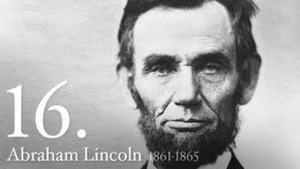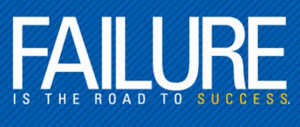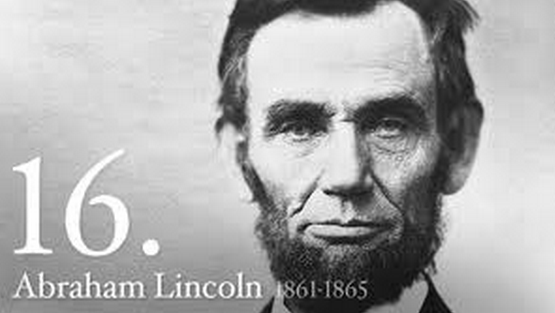When your intuition is roaring, follow it. Do you often follow your intuition? Do you consider it a success enabler of highly creative leaders? Let’s investigate what these success enablers are.

Check out our thoughts on team leverage.
There is a wide consensus in industry and academia that creativity is a key requisite to master today’s business challenges. A recent CEO survey by IBM showed that creativity is the number one requirement of today’s managers for the next years to come.
To be creative under time pressure, however, is not an easy task. Ideas are often the result of insights or come about through the long incubation and development of dispersed insights. Yet in business contexts, idea generation must work ad-hoc, on-demand and often in group contexts, as diverse and distributed knowledge is needed to solve problems creatively.
Related: The Zen of Abraham Lincolns Leadership Lessons
To facilitate such instant creative idea sessions, various creativity techniques have been developed over the last decades. These techniques are supposed to help professionals be more creative and generate novel and feasible ideas, either individually or in teams.
Still, numerous scientific evaluations show that the most widely used method in business today, brainstorming, is not necessarily an effective tool. Participants may think too far out of the box so that their ideas cannot really be put to use, as they are not sufficiently related to the problem at hand.
Based on experience we have defined 9 success enablers of highly creative leaders, as discussed below:
Creative leaders … committed senior leadership
Leadership depends on senior leadership for support. Even more so when you add creativity to the equation. This support helps remove barriers to enhance organizational creativity.
While the truly inspired and creative may break through the barriers to success, an environment where help supports organizational creativity may reap benefits from many surprising sources and not just the Einstein’s of the world. All leaders own the role to remove barriers.
Examples of creative leaders … building a community
We all need to find people that have common interests and thinking. Connecting to others helps us uncover phenomena, patterns, and solutions more quickly— and in ways, we might not imagine on our own.
Additionally, creative ideas have a difficult time thriving in isolation. Your community can inspire, ask, plant seeds, bear witness, provoke, acknowledge and nurture—all elements of a collaborative venture.
The bottom line: Our ideas need communities of contributors, and we need each other. The more connections we have, the more powerful our creativity becomes. Building communities is a critical success enabler.
Highly creative leaders and curiosity
Curiosity is the cornerstone of learning and creativity. Hands down the most important to creativity in our opinion. Think about answering these curiosity enablers: When did we stop asking questions?
What happens to our habits of inquiry and knowledge-seeking as we get older? What barriers shut down curiosity, and what reignites it?
In order to reclaim curiosity as a collaborative habit—and model the way for others—it’s necessary to embark upon a personal investigation to unravel perceptions and conventions that get in the way of a curious, open mindset and enable it.
Open communication and information sharing
Open communication and information sharing are another of the essential success enablers. Our understanding of organizational decisions and policies, opportunities to voice concerns, and a sense of ‘being heard’ all enhance leadership creativity.
For me, one of the barriers to creative collaboration is an environment where people undermine each other, information is not shared, and there is no credit given for creativity. It is essential to have access to information as creativity is often spurred on by hitchhiking on new ideas that flow past the alert mind–often converting them to a new situation or application.

Reflection
We need leaders to engage in continuous reflection, be aware and open, and challenge their assumptions. And certainly, gain from continuous learning. On a collective level, we want leaders to share and support while trusting and being vulnerable as part of a creative journey within a supportive community.
Combine and transform
To be a successful leader and thinker, you need to also be an accomplished learner. By participating in combining and transforming, we must recognize the importance of acknowledging and recognizing those individuals and works that have influenced our thinking. And learn from them.
Practicing the habit of combining and transforming is about embracing a new form of learning and finding your creative voice. It allows us to form powerful connections with other people and to engage in social learning.
Empowerment
The empowered have much freedom and authority to initiate change. Some gave it to themselves while others waited for it to be given. Often many see the anxiety that at times accompanies empowerment. Ideally, the empowerment of people results in increased initiative, involvement, enthusiasm, innovation and speed.

Learning through failure
Failing forward is a key habit of creativity. Failing fast, failing intelligently, and learning from those failures makes room for imperfection, iteration, and experiencing joy in the process.
One of the ways to practice failure is through a “crash and burn” exercise. A crash and burn is an attempt to do something with a 5 percent or less chance of success. It might be sending an email to someone who is famous and asking for help on a project or attempting to sew a dress even though you don’t know how to sew on a button.
This exercise allows the learner to stretch their comfort zone and pay attention to their failure response. By practicing failing well and observing our inner dialogue when doing so, we recondition and empower ourselves. We get a chance to examine and shore up our identity, take risks, and become better versions of ourselves.
A creative solution
The need for creativity in leadership requires innovative solutions. Creativity is not a singular skill that can be developed in one way or even in several ways. As leaders, we must create the conditions that allow creativity to flourish; keeping in mind that creativity will manifest itself differently in everyone.
One way for leaders to learn how to create these conditions is to develop a mindset that allows them to be aware of their own creative abilities. This then creates conditions for a ripple effect of awareness and appreciation of creativity in others.
The bottom line
“I knew that if I failed I wouldn’t regret that, but I knew the one thing I might regret is not trying.”
For some reason, many of us have been conditioned to be more afraid of failure than we are of inaction. However, failure, in addition to being inherently valuable as a learning process, contains within it the chance of success. And no matter how small that chance is, it’s better than the chances of success when we choose not to even try.
My journey as both a learner and leader has shown me that those that are able to interact and manage their learning environment so much better as leaders than those who don’t.
I believe there is a direct link to creativity in this relationship. Building on it greatly strengthens the highly creative leader’s success enablers.

